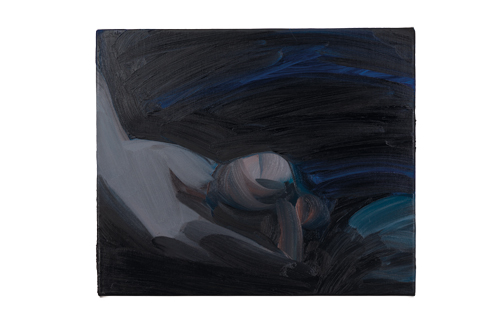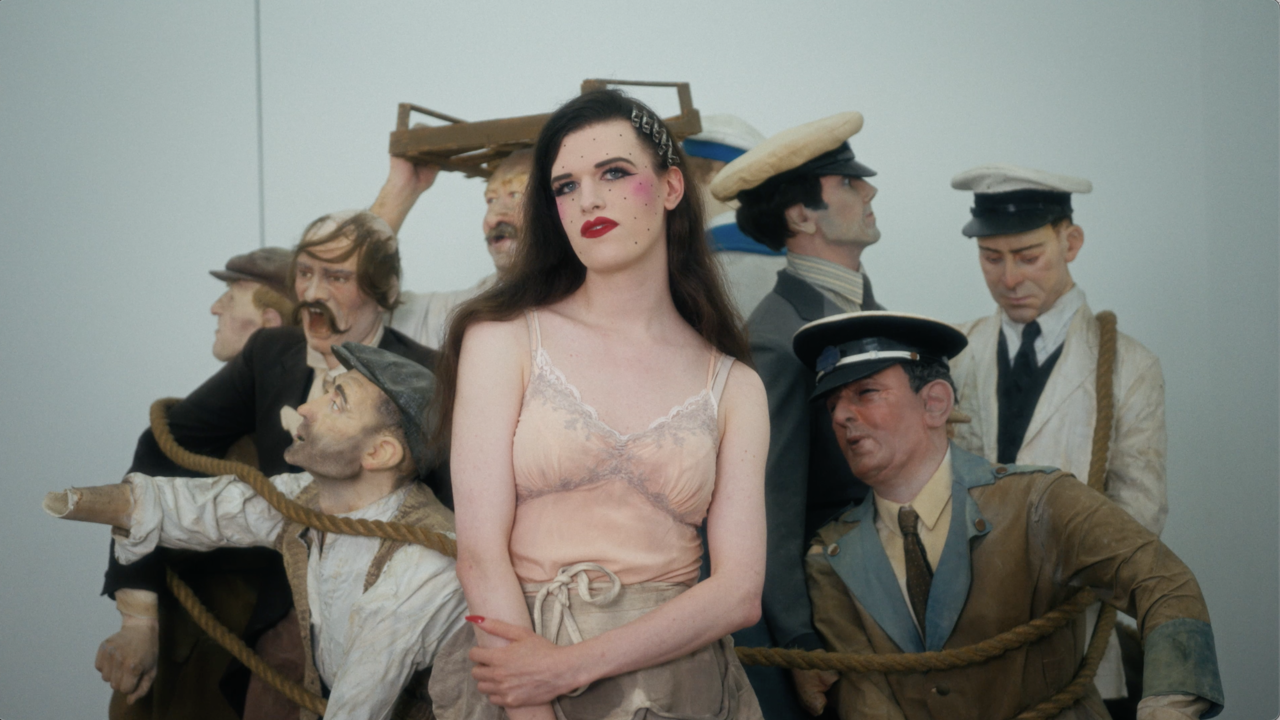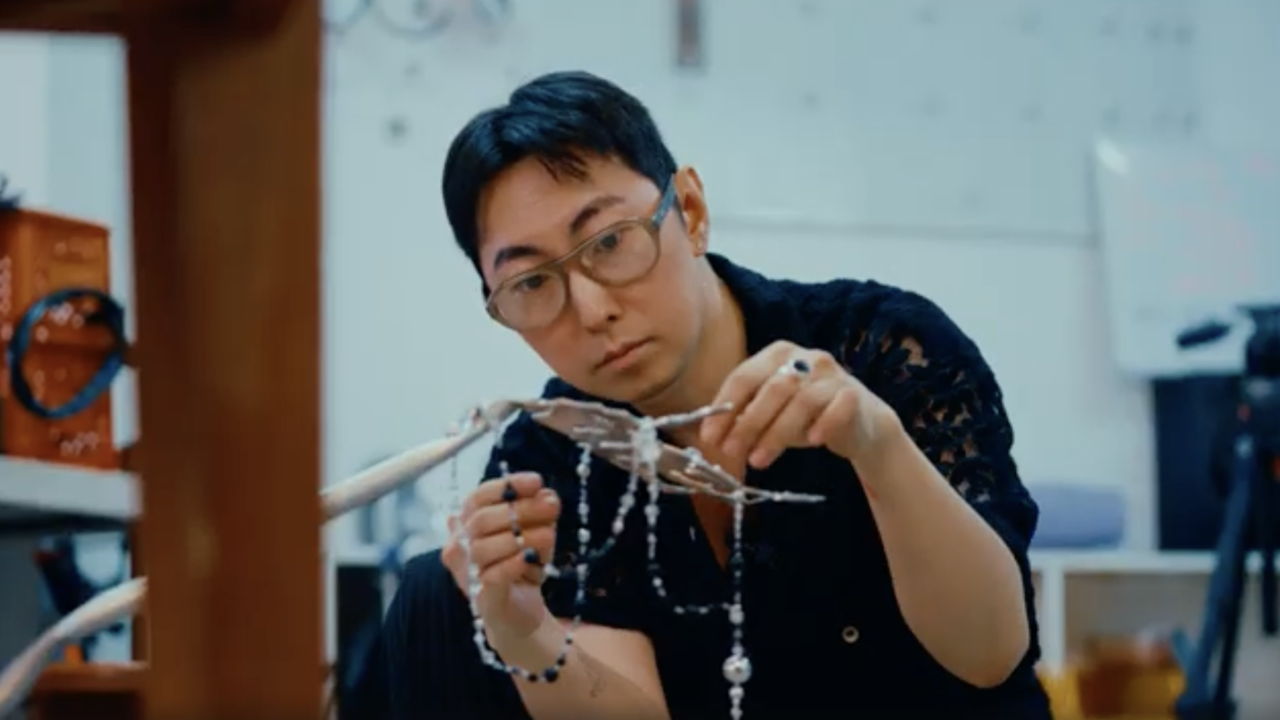In Focus: Celia Hempton
Painting, nudes and chatrooms
Painting, nudes and chatrooms

For all the flesh depicted in Celia Hempton’s portraits, sensuality is only one part of the story. James (2015), for example, is lithe to the point of quivering: the tangerine background playing against the plummy brown of the subject’s pouchy testicles, ice-green strokes giving swell to his buttocks. Yet, there is an evacuated quality, too; the larger expanse of skin carries an anaemic cast. The whole picture seems to be bleeding out.
The frontal framing of buttocks in Kamal (2015) superficially resembles Robert Mapplethorpe’s photograph Peter Reed (1980), but the comparison serves to show up the former’s odd docility, the subject aimless in his blue surroundings. Although Hempton’s nudes are typically titled with proper names, they are impersonal, their faces cropped out. They communicate something unknowable and ungraspable in even the frankest exposure of the body; try to clasp Kajsa (2015), and she would slip between your palms like an icicle.
The subjects aren’t strangers; they are Hempton’s friends, acquaintances and, for the picture that initiated the series, her boyfriend. Initially, she wanted to paint his erection, but this required him to watch pornography while he posed – ‘which put me in an interesting position’, she tells me – so she eventually asked him to flip onto his front. Though the foregrounding of male buttocks carries cultural baggage, the sexual inflection of this particular presentation of the body is, in some sense, incidental. What Hempton seeks, rather, is the chance to paint from an ‘interesting position’ – in this case, the fascination, rage, hilarity or whatever it is that ensues from watching your partner turned-on by someone else. ‘What I am looking for when painting’, Hempton says, ‘is a situation more important than the painting itself.’

For her series ‘Chat Random’ (2014–ongoing), which was first shown at Southard Reid in London in 2014, the artist utilizes Chatrandom.com, which connects global users via webcam – usually for the purposes of masturbation. Hempton asks random men if she can paint them, and then, brush in one hand and typing with the other, she depicts as much of the on-screen feed as the subject’s patience – or arousal – allows. To see and be seen: this aspect of Chatrandom is compulsive, trance-like and occasionally aggressive. But then ‘without awkwardness’, Hempton says, the process ‘just becomes about making a painting again’. It’s as if self-consciousness – something that even the most eager users of Chatrandom, not coincidentally, lack – is, for the artist, a luxury antithetical to creativity.
The date of the sitting and the duration of connection with each model is measured in both the title and the surface of the ‘Chat Random’ paintings: short ‘sittings’ are greasily fluid (Marco, Italy, 17th June 2013) and longer ones worked and re-worked into tar-like encrustation (United Kingdom, 26th October 2013). In Russia, 12th August 2014 and Saint Pierre and Miquelon, 18th August 2014 you can sense the artist’s eyes adjusting over time to the purple and aquamarine dimensions of dark rooms – the subjects presumably prefer low light – while the impenetrable black of United States, 12th July 2014 suggests a broken or switched-off webcam. In some ways, the series is a kind of census or travelogue, capturing local conditions (the quality of light, the colour of wallpaper, the speed of internet connections) from Iraq to Russia and Switzerland. When Hempton denotes Chatrandom as ‘wild’, she means in the sense of an untamed, uncharted terrain.

On a studio visit, Hempton describes a painting of one sitter’s room as ‘Tarkovsky grey’; it evokes the director’s great movie Stalker (1979), the tale of an incursion into the feral, forbidden ‘Zone’. Like the film’s protagonists, Hempton seeks wisdom in trespass: whether navigating the heavily sexualized, masculine virtual space of Chatrandom, breaking into ex-industrial sites to sketch, or painting in the ash-thick air at the rim of the Stromboli volcano. Even as a child – a self-described tomboy – on walks in rural Wiltshire, Hempton and her father would dare each other to eat an unidentified mushroom, say, or walk the length of a rickety jetty. It seems to have formed her relationship to a kind of risk-embracing swagger, but also, perhaps, introduced her to an affective, gendered experience of physical surroundings.
In Stalker, the landscape of the ‘Zone’ is charged to the point of sentience: seemingly a living, sometimes hostile system; in Hempton’s paintings, cropped bodies almost become animate landscapes. Caspar (2014) captures the topography of legs, back, buttocks in creamy yellows, pinks and blues applied in layers, like an Ordnance Survey Map, while Greece, 29th August 2013 makes of its subject a geological shelf. The intimate cartography of these close-ups simultaneously suggests a great breadth existing outside the picture’s edge: sometimes, Hempton pairs works on canvas with large abstract murals, inspired by the wall-paintings of gardens in the Roman House of Livia, a first century BCE trompe l’oeil. Last year, these broad, overlapping patches of dead colour, accented by scumbled streaks, greedily covered the walls in Hempton’s presentation at the 10th Gwangju Biennale and her show at Galleria Lorcan O’Neill in Rome. At times, her ambition seems as expansive as these fields of colour: to make scenery of enveloping skin, and to turn bodies into boundless worlds.
Celia Hempton lives in London, UK. This year, she has had solo shows at Galerie Sultana, Paris, France, and White Cubicle, The George and Dragon. Her work was also included in 'La Femme de Trente Ans' (A Woman of 30), Art:Concept, Paris; 'Odradek', Instants Chavirés, Montreuil, France; fig-2 25/50, ICA Studio, London, UK. In 2014, she had solo exhibitions at Southard Reid, London, and Lorcan O'Neill, Rome, Italy.






















